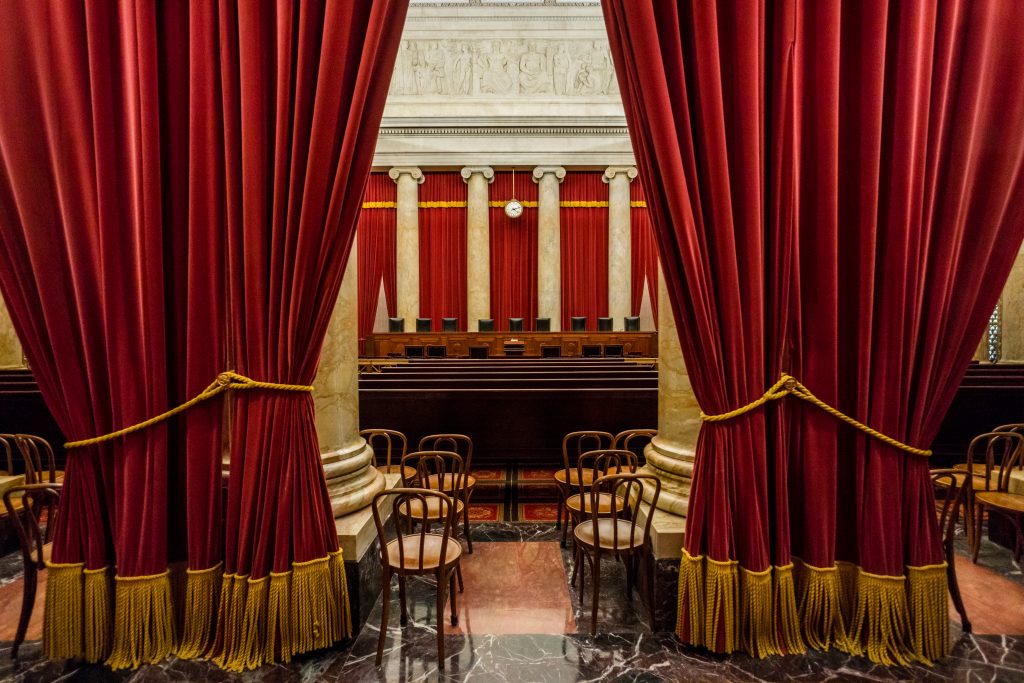President Trump Misunderstands SCOTUS Recusals

Earlier this week, President Trump tweeted that Supreme Court Justices Ginsburg and Sotomayor should recuse themselves from “Trump, or Trump related, matters.” With so many challenges to Trump Administration policies working their way through the courts, and cases about subpoenas for his personal financial records already at the Supreme Court, it’s not surprising that the President might be looking for reasons that the Court’s less conservative Justices shouldn’t hear those cases. But here, as in so many other areas, the President doesn’t seem to understand just how the Supreme Court works.
The President’s tweet was prompted by a recent dissent by Justice Sotomayor, in which she called out her colleagues for repeatedly granting stays that allowed Trump Administration policies to go into effect. The particular stay decision from which she dissented involved a new Trump Administration rule, which would redefine the term “public charge” to make it easier to exclude immigrants from the country, an issue on which the Constitutional Accountability Center has filed multiple amicus briefs. But Sotomayor’s point was more general. “The Court’s recent behavior on stay applications has benefitted one litigant over all others,” she wrote, referring to the federal government. “I fear that this disparity in treatment erodes the fair and balanced decisionmaking process that this Court must strive to protect.” (It’s unclear why the President included Justice Ginsburg in his tweet, though perhaps it was prompted by comments she made about then-candidate Trump during the 2016 primary cycle.)
To the President, this is grounds for recusal. But the actual recusal rules for the Supreme Court tell a different story. While some Court watchers have made compelling arguments that there should be more robust conflict of interest and recusal rules for the Supreme Court, a statute first enacted in 1948 appears to apply to Supreme Court Justices. The statute provides that “[a]ny justice . . . shall disqualify himself in any proceeding in which his impartiality might reasonably be questioned.” (Although there is a separate written code of conduct for lower court judges, that code does not apply to the Supreme Court.)
That statute lists several specific circumstances that warrant disqualification. First, Justices should recuse themselves when they have worked on a particular case in another capacity, whether that was as a lawyer or judge, or as a government employee where he or she served as “counsel, adviser, or material witness” to the case. This kind of recusal has happened numerous times in the recent past. For example, between 2005 and 2015, Justice Kagan recused herself more than forty times because she had worked on cases while she was Solicitor General for President Obama. Additionally, Justice Sotomayor recused herself when she had already heard arguments on a case as a judge for the Second Circuit Court of Appeals, as did Kavanaugh, in three cases in which he participated at the D.C. Circuit
Second, Justices should recuse themselves in cases when they have a personal financial interest in the case, which includes “ownership of a legal or equitable interest” in a party. Chief Justice Roberts has recused himself at least nine times because of stock ownership, and Justice O’Connor also disqualified herself from cases involving telecommunications because she owned stock in AT&T. Other Justices have recused for this reason as well.
Finally, Justices should recuse themselves when they have a familial or personal tie to the party or the lawyer. Recusal on this ground predates the statute and occurred at least as early as 1816, when Justice John Marshall recused himself in Martin v. Hunter’s Lessee because he and his brother had contracted with one of the parties over the land at issue. More recently, in United States v. Virginia, Justice Thomas recused himself because the policy at issue dealt with the military institute where his son attended school, and in a 2001 death penalty appeal, three Justices recused themselves because the victim’s son had worked for them.
Clearly, none of these circumstances—nor any other circumstance that legal ethicists could point to in good faith—are at play here. Instead, this was a Justice making an observation, as she saw it, of the posture of her conservative colleagues in similar cases over recent Terms. Sotomayor’s observation has been confirmed by quantitative analysis. Hardly “inappropriate,” it is instead the core of a Justice’s work. By contrast, in another example of President Trump completely disregarding how the Supreme Court functions, he is attempting to divert attention from the facts Justice Sotomayor pointed out to tilt the playing field in his favor.
